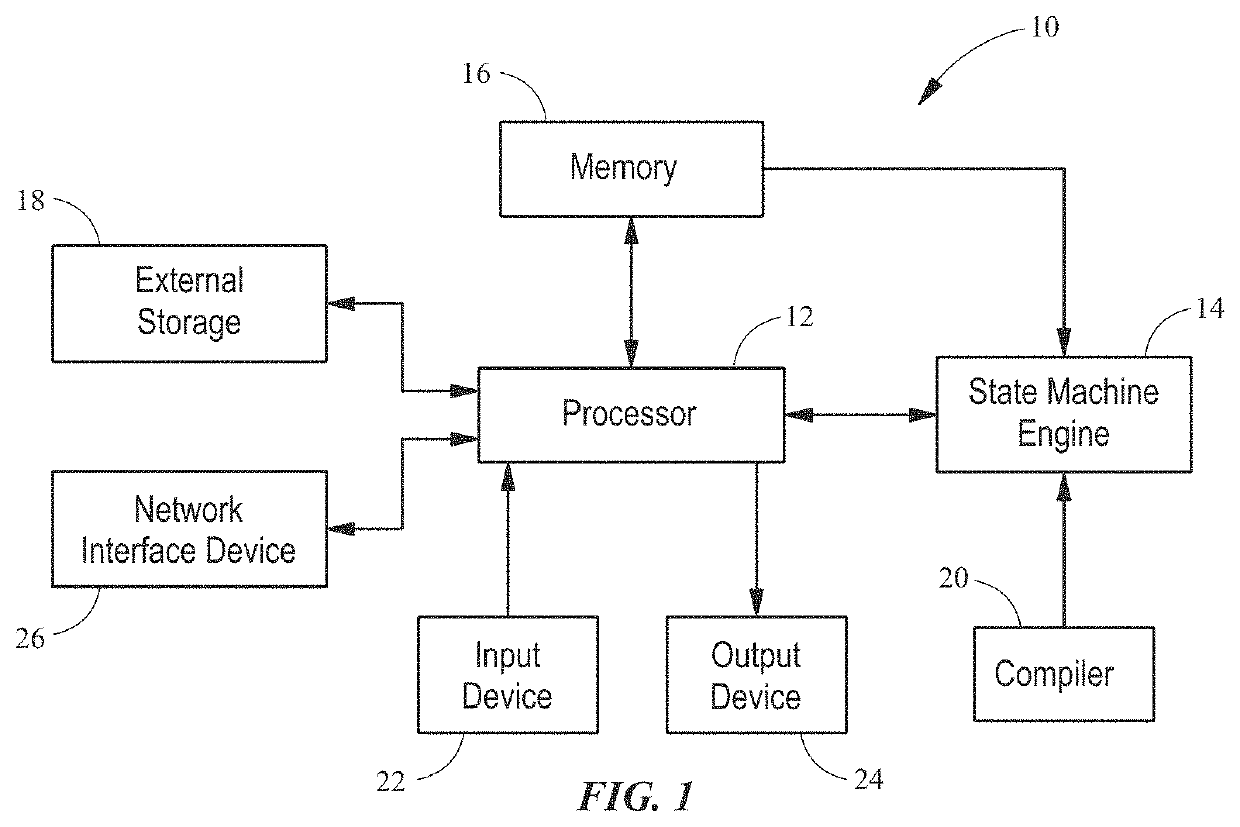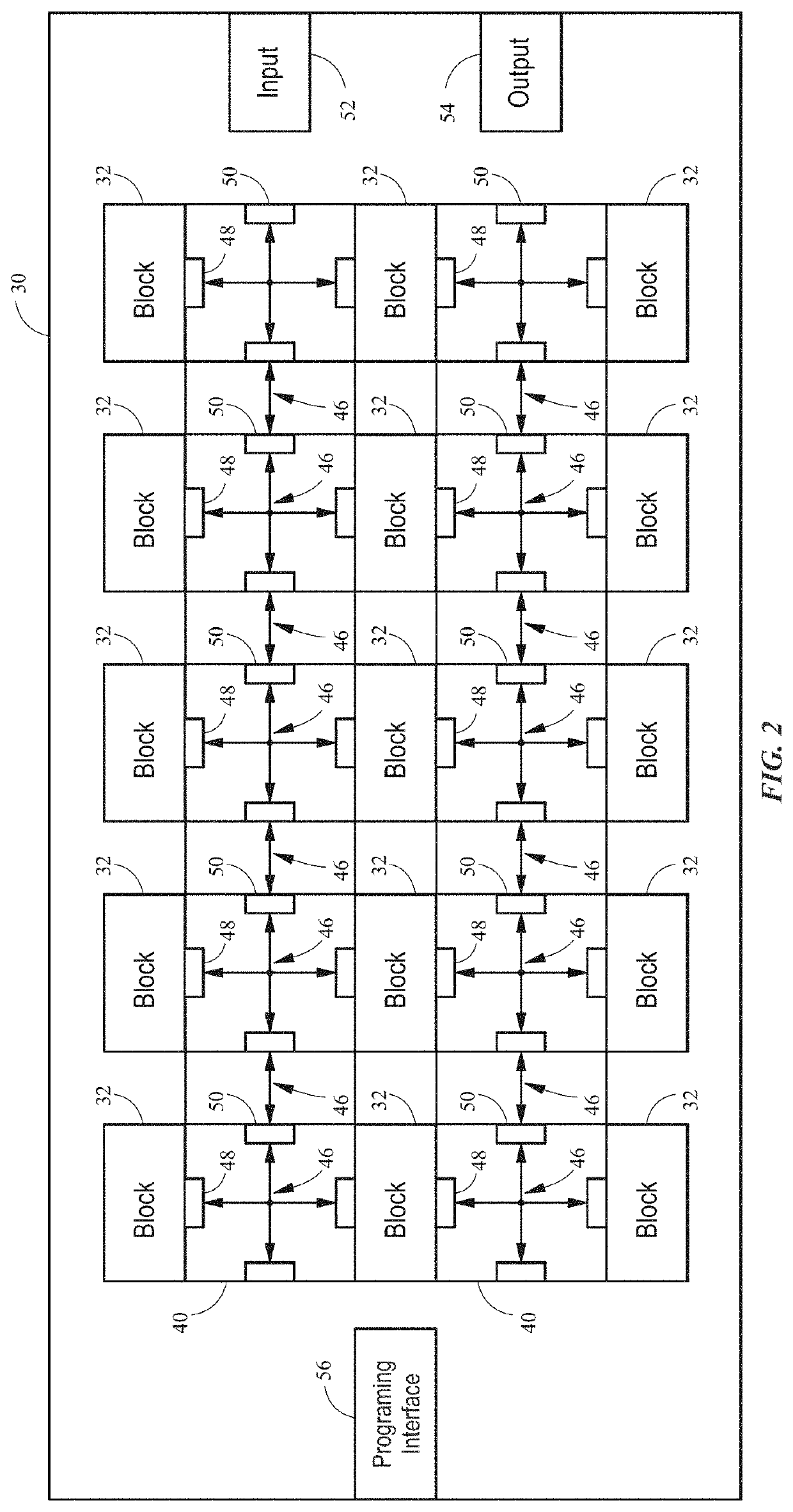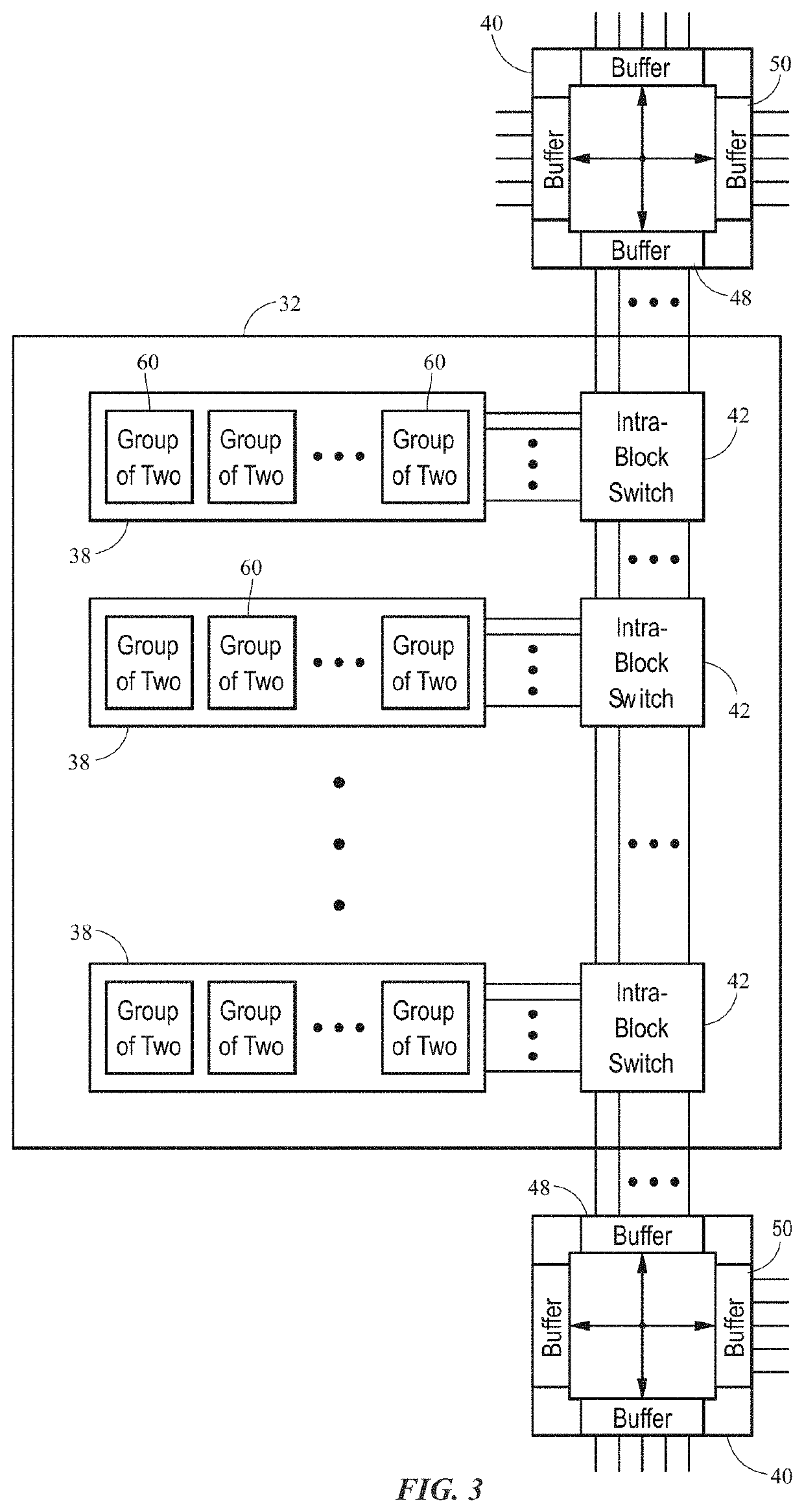Methods and systems for creating networks
a network and network technology, applied in the field of electronic devices, can solve the problems of increasing complexity of pattern recognition tasks, and increasing the delay before the system is ready to search the next portion of the data stream
- Summary
- Abstract
- Description
- Claims
- Application Information
AI Technical Summary
Benefits of technology
Problems solved by technology
Method used
Image
Examples
Embodiment Construction
[0036]Turning now to the figures, FIG. 1 illustrates an embodiment of a processor-based system, generally designated by reference numeral 10. The system 10 may be any of a variety of types such as a desktop computer, laptop computer, pager, cellular phone, personal organizer, portable audio player, control circuit, camera, etc. The system 10 may also be a network node, such as a router, a server, or a client (e.g., one of the previously-described types of computers). The system 10 may be some other sort of electronic device, such as a copier, a scanner, a printer, a game console, a television, a set-top video distribution or recording system, a cable box, a personal digital media player, a factory automation system, an automotive computer system, or a medical device. (The terms used to describe these various examples of systems, like many of the other terms used herein, may share some referents and, as such, should not be construed narrowly in virtue of the other items listed.)
[0037...
PUM
 Login to View More
Login to View More Abstract
Description
Claims
Application Information
 Login to View More
Login to View More - R&D
- Intellectual Property
- Life Sciences
- Materials
- Tech Scout
- Unparalleled Data Quality
- Higher Quality Content
- 60% Fewer Hallucinations
Browse by: Latest US Patents, China's latest patents, Technical Efficacy Thesaurus, Application Domain, Technology Topic, Popular Technical Reports.
© 2025 PatSnap. All rights reserved.Legal|Privacy policy|Modern Slavery Act Transparency Statement|Sitemap|About US| Contact US: help@patsnap.com



